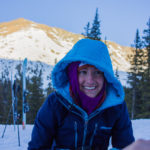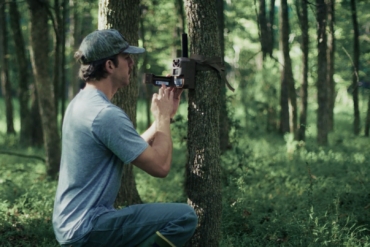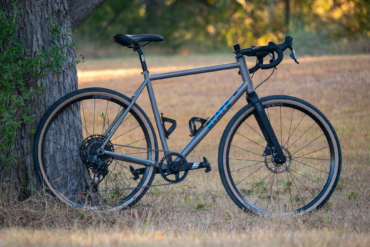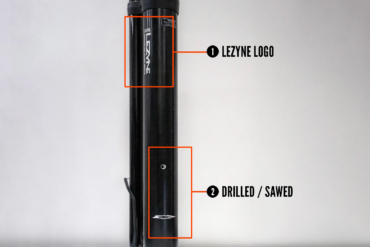This spring, Vermont will open its first-ever fully adaptive-ready mountain bike trail network. Vermont-based Richmond Mountain Trails (RMT) began building the new trail system — the Driving Range — in 2022 on 256 acres of private land in Bolton.
The project has been a close collaboration between RMT, the Kelly Brush Foundation, Vermont Mountain Bike Association (VMBA), a variety of local businesses and donors, and a large network of community volunteers.
The Driving Range isn’t just about building new trails, though. It’s about building a broader community around adaptive riding and helping the growth of adaptive riding as a new sport in its own right.
There are more than a million adaptive athletes in the United States alone. But even so, equipment and resources to support these athletes have lagged behind demand.
The increasing availability of adaptive mountain bikes through Companies like Bowhead and organizations like the Kelly Brush Foundation has played a key role in spurring the growth of adaptive riding. They’ve helped promote individuals’ access to adaptive equipment and resources immensely.
But all of these advances are moot without trail systems that can accommodate adaptive mountain bikes. That’s where projects like The Driving Range come in.
“The ability to adventure was never really a thing we [adaptive athletes] could do. Adaptive mountain biking is enabling us to adventure and go out in the woods and have experiences that we weren’t able to have in the past,” explained Greg Durso, a local adaptive cyclist and program director for the Kelly Brush Foundation. Durso has been a key player in the development of The Driving Range.
What Do Adaptive-Friendly Trail Networks Actually Look Like?

There are a lot of misconceptions about what an adaptive trail network actually looks like. The main considerations when building trails that will work for all riders are width and camber.
Trails and bridges need to be wider to accommodate three-wheeled cycles. And the camber of the trails has to be more gentle so as not to tip adaptive cycles. Within these guidelines, however, there is endless possibility to build trails that offer different challenge levels for everyone — regardless of what kind of bike they ride.
“The driving range is showing people that you can have trails that are black diamond, technical, and challenging but that there are a specific set of requirements that make them adaptive accessible,” explained Nick Bennette, Executive Director of VMBA.
In the construction of The Driving Range, Greg Durso led the charge of testing every section of the trail in tandem with volunteers. Adjustments could then be made in real time to ensure that the trail system will work for any rider.
And the project is underscoring how adaptive-friendly trails benefit everyone.
“An inclusive, universal trail system isn’t boring,” said Bruce Downes, Senior Director of Marketing and Digital Programs at the Kelly Brush Foundation. “It’s still intense, highly technical terrain and it’s really cool to see that something built for universal access first benefits everybody. It makes for a really intense, engaging trail system and it’s important to normalize this, show that it’s doable, and show that it doesn’t detract from anyone’s experience.”
Vermont Prioritizes Adaptive-Friendly Mountain Bike Trails Across State

VMBA has a major effort underway to enhance the quality and quantity of adaptive trails throughout the state. Its goal is embedded in its current strategic plan — to increase adaptive rider representation.
The organization is currently in its second year of an adaptive assessment program. It’s being run in conjunction with the Kelly Brush Foundation. With this program, representatives from VMBA and the Kelly Brush Foundation visit trail networks and chapters across the state. They identify specific changes that need to be made to accommodate adaptive riders. The organizations even write descriptions of the accessibility of each trail network.
Part of this work is aimed at reframing how adaptive riding is viewed.
“Moving away from binary framings of accessibility and recognizing the spectrum of what an accessible trail can be is important,” explained Bennette. “And it’s critical for adaptive athletes to have a clear understanding of what they’re getting themselves into. We want to create opportunities for beginner, intermediate and advanced riding within each trail network for all riders. And for folks to be able to move through those challenges and move up if that’s what they want.”
As adaptive riding grows, this emphasis on progression is key for the advancement of the sport. Just like any other activity, there need to be places where adaptive riders can test their equipment and get into the sport. There need to be opportunities for them to push themselves and try progressively harder levels of riding in order to advance.
Setting a Precedent for Broader Growth

Given that it’s being built from the ground up with universal riding in mind, The Driving Range is ahead of the curve. But the hope is that it will inspire more adaptive-friendly trails and community-led trail construction across the country.
“It’s almost like we’re building a coalition around the country,” explains Durso. “Everyone wants to do this. But they’re either scared it’s too expensive or that it will dumb down the experience. To show that building universal trail systems can be done, done right, and done efficiently can influence other places. We get to talk about what we’re doing in Vermont with trail builders from other states. We’re trying to create more of a national movement. So this doesn’t just have to be in Vermont, it can be anywhere.”

Thanks to projects like The Driving Range and trail development in Kootenay, British Columbia, and Bentonville, Ark., the infrastructure for adaptive riding is finally hitting a critical mass, allowing adaptive mountain biking to be pursued at a higher level.
Furthermore, these projects are highlighting that trails built for all riders can be fun and challenging for everyone. Essentially, they’re building a more inclusive mountain biking community.
“It’s a really cool time to be involved with adaptive riding,” says Rob Galloway, RMT Board Member, and adaptive bike instructor. “Adaptive mountain biking is really just now starting to hit its stride. And a lot of that has to do with the availability of capable adaptive mountain bikes and trail systems.”
It Takes a Village

The Driving Range will open in June 2023, but it won’t be complete until fall 2024. The trail network has relied heavily on community volunteers and grants, as well as the expertise of professional trail builders. In 2022, volunteers logged more than 1,600 hours digging, benching, and tamping at the Driving Range.
RMT’s all-volunteer board put in hundreds of additional hours learning what it means to make a mountain bike trail adaptive but still fun for all riders. It also engaged in scouting, mapping, flagging, working with professional trail builders, teaching volunteer machine operators how to make mountain bike trails, and fundraising to bring this project to fruition.
“It took a village to build the Driving Range. But what I didn’t expect was that the Driving Range also created a community,” says RMT Board President Berne Broudy. “Local and national organizations and brands, including VMBA, SunCommon, OnX, Yeti Cycles, Fox Factory, and Velocio, to name a few, have put up the money to pay for the work.
“And every Wednesday night from May to October, 15 to 35 people show up to sweat, get bitten by black flies, and share hotdogs and drinks. It’s been incredible to get to know those folks, and as we’re on the cusp of opening, to see what we’ve created together.”
So, get involved if you’re in the area. Trail nights are Thursdays, 5-8 p.m. from May through October. You can also visit richmondmountaintrails.org for more information or to make a donation.








